Dr. Gholamreza Karamian provided a presentation on his excavation of a Partho-Sassanian site at Ramavand, Lorestan in Western Iran at the Polish Institute of Advanced Studies (PIAST) in Warsaw on May 23, 2019:
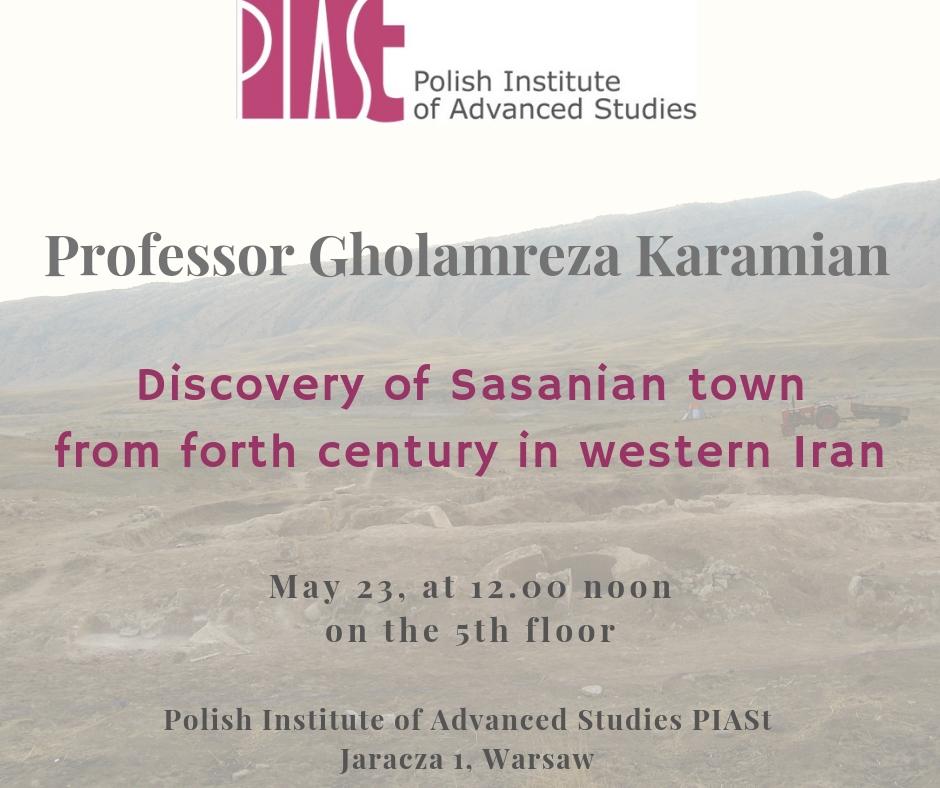
Dr Karamian has already published his findings in the HISTORIA I ŚWIAT journal with Kaveh Farrokh as co-author in 2017.
Dr. Karamian’s research is of special interest to persons interested in Parthian and Sassanian arts and architecture. The below initial report by Dr. Karamian published in Kavehfarrokh.com on May 1, 2014 provides an overview of his research and findings (especially rare and valuable photographs).
=================================================
I. Introduction
Partho-Sassanian town called Ramavand is located 130 km far from the Khorramabad center of Lorestan province in Iran. The excavation which carried out by author on December 2013 revealed new cultural materials and gives new information regarding the application of the huge building that discovered in the last season (2011). Discovering an underground tomb in new season which is just located adjacent of the main arch of the previous building, give new idea regarding the application of the Ramavand complex as religious place. Ramavand historical monuments in previous excavation use to consider as a royal Sassanian palace.
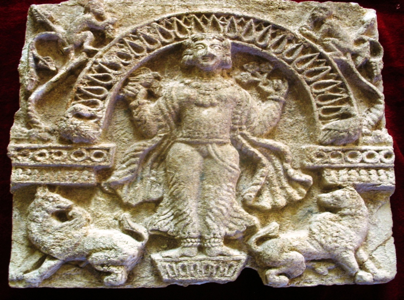 The “woman” of Ramavand discovered by Dr. Gholamreza Karamian, possibly Anahita? (Photo: Dr. Gholamreza Karamian).
The “woman” of Ramavand discovered by Dr. Gholamreza Karamian, possibly Anahita? (Photo: Dr. Gholamreza Karamian).
II.Background of the study
The site was discovered in 2007 during the archaeological survey conducted by S. R. Seyedin Boroujani of the Iranian Center for Archaeological Research. Proper archaeological investigations were initiated in 2008 by G. Karamian, A. Mansouri and M. Mohamadi.
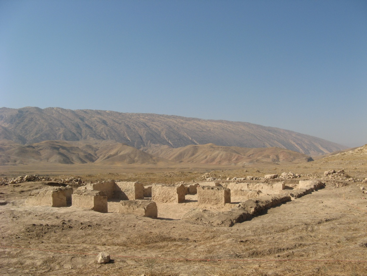 Building excavated by Dr. Gholamreza Karamian at Ramavand in 2013 (Photo: Dr. Gholamreza Karamian).
Building excavated by Dr. Gholamreza Karamian at Ramavand in 2013 (Photo: Dr. Gholamreza Karamian).
Further field research directed by G. Karamian and K. Abdi, also served the function of rescue excavations. They were conducted in the autumn of 2010, just before the planned opening of the dam on Seymareh river. The excavations, although limited in extent and time, provided important information on architecture and art of the late Sassanian period. Unfortunately, some portions of the site had been looted by robbers before the arrival of archaeologists, and fragments of stucco decoration scattered by the looters were collected by M. Mansouri and transferred to the Cultural Heritage Organization of Lorestan.
Aim of the study III.
The main of this study is better understanding of the chronology of the site in the area of the study.
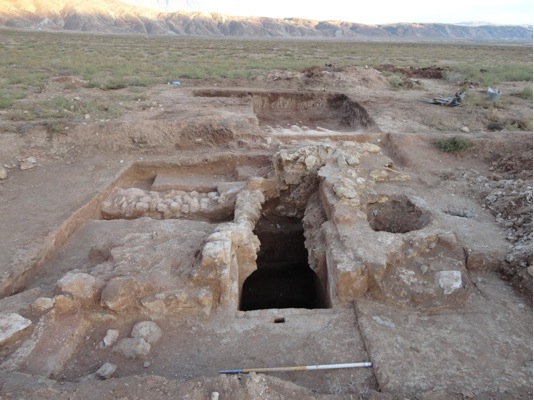
Tomb excavated at Ramavand by Dr. Gholamreza Karamian in 2013 (Photo: Dr. Gholamreza Karamian).
IV. Expected result
Expected results from research can be divided into two categories as follows:
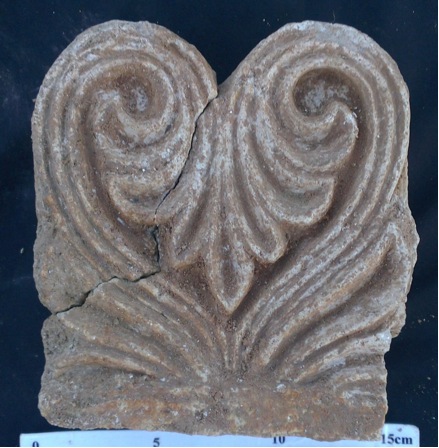
Stucco decoration discovered by Dr. Gholamreza Karamian at Ramavand (Photo: Dr. Gholamreza Karamian).
1. Sample stucco motifs from Ramavand (Barz Qawaleh) are similar to those stucco motifs found in other Partho-Sassanian sites (sites like Hajiabad in Fars, Tepe Hissar in Damghan, Ctesiphon , Kish and Parthian palace of Assure in Mesopotamia ). Based upon evidence of similarity with other Partho- Sassanian sites, the Ramavand (Barz Qawaleh) stuccos can also be linked to the Partho- Sassanian period. The variety of stuccos from the site makes it one of the finest informational resources for the study of Partho-Sassanian art and a useful site for the study of Iranian historical geography.
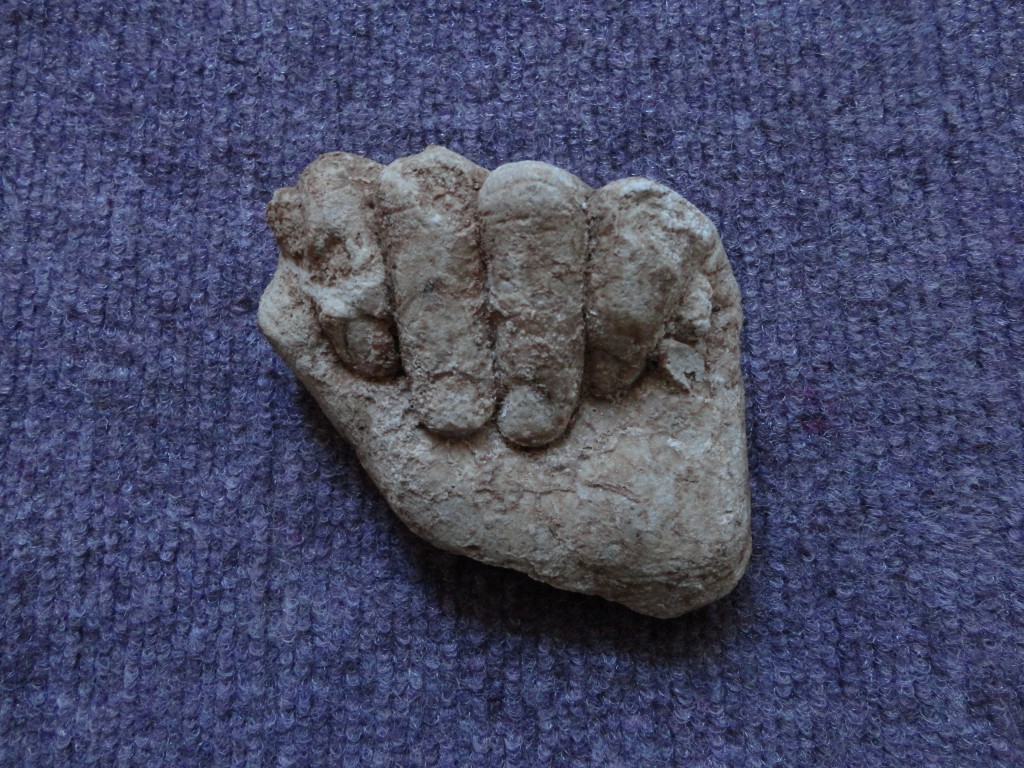 “The Hand” discovered by Dr. Gholamreza Karamian at Ramavand (Photo: Dr. Gholamreza Karamian).
“The Hand” discovered by Dr. Gholamreza Karamian at Ramavand (Photo: Dr. Gholamreza Karamian).
2. The tomb architectural designs hint that structures at the site were a significant place of habitation. On the other hand, the motif of what may be a sacred goddesses also suggests that Ramavand (Barz Q) may have functioned as a religious monument.
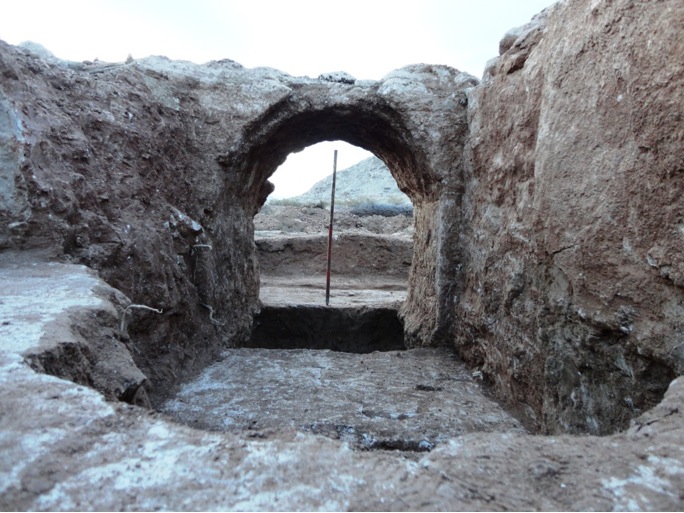
Inside the structure of Ramavand in 2013 (Photo: Dr. Gholamreza Karamian).
Selected References :
AZARNOUSH, M. 1987. Sassanian Art in Eastern Fars: The excavation of a manor house at Hajiabad, Darab, Iran, Ph.D. thesis, University of California, Los Angeles, 1987.
ANDRAE. W and H. LENZEN, 1933. Die Partherstadt Assur, Berlin.
A.U. POPE, 1938-1939. A survey of Persian art, p. 177.
BALDWIN.CARL R, 1970. Sassanian Ducks in a Western Manuscript Gesta, Vol. 9, No. 1, pp. 3-10.
BALTRUSAITIS. J. 1938-39. Sasanian Stucco. A. Ornamental, A. U. Pope and Ph. Ackerman, A Survey of Persian Art from Prehistoric Times to the Present, Oxford, pp. 601-30.
BIVAR. A. D. H, 1954. Fire-Altars of the Sassanian Period at Balkh, Journal of the Warburg and Courtauld Institutes, Vol. 17, No. 1/2 pp. 182-183.
BLYTHE G. M , A,1981. Glossary of Robert Adam’s Neo-Classical Ornament ,Architectural History, Vol. 24, pp. 59-82.
BRUNNER..J C, 1979.Sasanian Seals in the Moore Collection: Motive and Meaning in Some popular Subjects Metropolitan Museum Journal, Vol. 14, , pp. 33-50
DIMAND M.S, 1933. Parthian and Sasanian Art The Metropolitan Museum of Art Bulletin, Vol. 28, No. 4, Part 1 Apr, pp. 79-81
——————– , 1937. Studies in Islamic Ornament: I. Some Aspects of Omaiyad and Early ‘Abbāsid Ornament Ars Islamica, Vol. 4, pp. 293-337
DMITRIEV. V, 1994. Ram’s Horns and Falcon’s Wings: Religious Symbolism in Sasanian Kings’ Crowns (in Russian) Journal of historical, philological,and cultural studies. No1 (35) pp.144-152.
FELTHAM.H, 2010. Lions,silks and silver: The Influence of Sassanian Persia, Sino-Paltonic,University of New South Wales.
FINCH. M , 1991. The Cantharus and Pigna at Old St. Peter’s, Gesta, Vol. 30, No. 1 (), pp. 16-26.
GELFER J. M., 1986. “Medieval Islamic symbolism and the paintings in the Cefalù Cathedral, E.J. Brill, Leiden, Netherlands.
GHRISHMAN R., 1962. Iran: Parthians and Sassanians, Thames and Hudson, London .
HOFFMAN. E. R, 2007. Late Antique and Medieval Art of the Mediterranean World, Blackwell.
KROGER J. 1982. Sasanidischer Stuckdekor, Mainz.
TREVER K.V. and LUKONIN V.G, 1987. Sasanidskoe serebro. Khudozhestvennaia kul’tura Irana III-VIII vekov. Sobranie Gosudarstvennogo Ermitazha ,Moscow: Iskusstvo.
LOSH. S, 2001. Architect, Romantic, Mythologist J. B. Bullen The Burlington Magazine, Vol. 143, No. 1184 Nov, pp. 676-684.
ROSE J., 2010. Zoroastrianism: An Introduction I.B.Tauric publication, London.
SCHMIDT E., 1937. Tepe Hissar Excavations University of Pennsylvania Museum.



